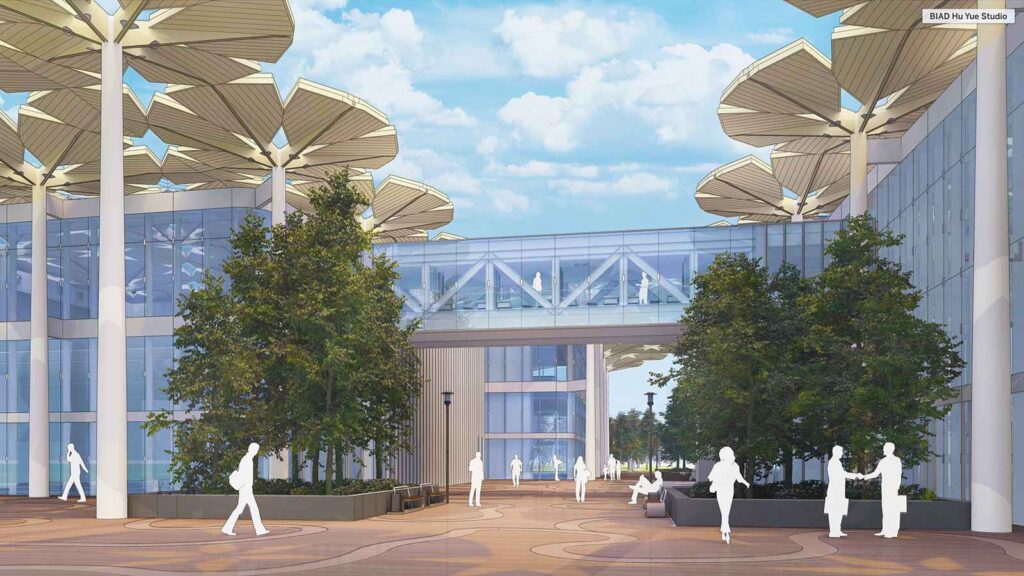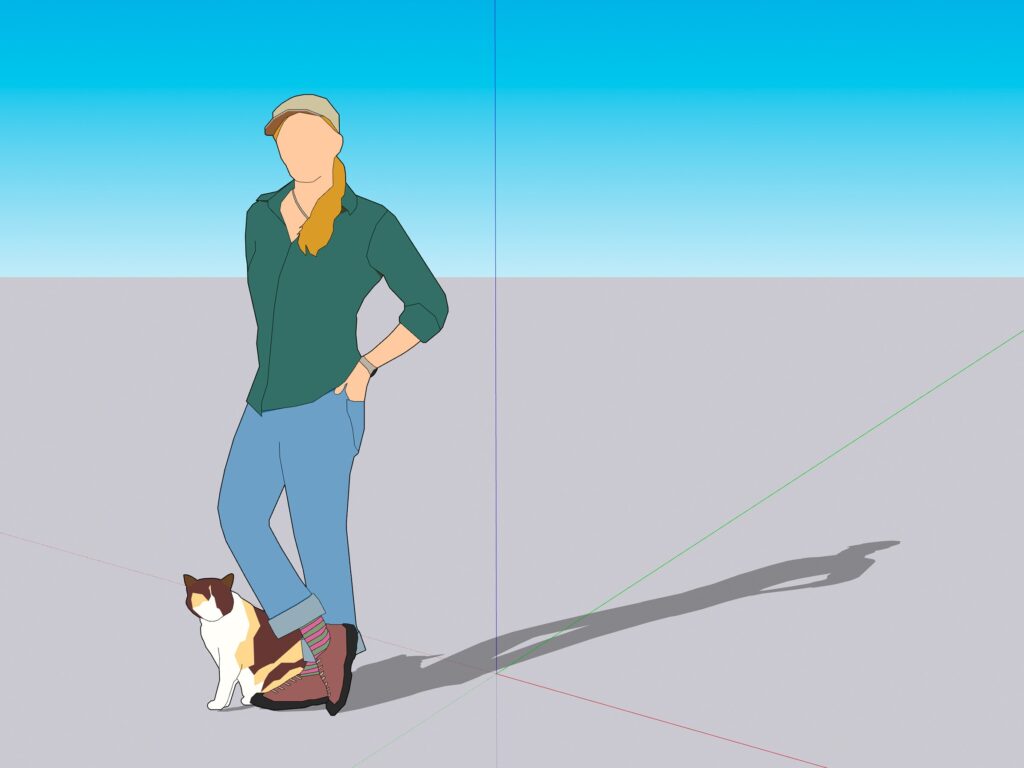Everybody’s doing it. Green design isn’t unusual. It’s the thing to do. As more of us wake up to the potential for doing things sustainably and sensitively, doing our bit to help fight climate change, a greener approach is a must. This article looks at what is green building design and how to design a green building. If you’re researching green building design, this guide reveals everything you need to know about what it is, why it matters, the principles underlying it – and how to actually do it.

What is Green Building Design?
Green building design is sustainable building design. They mean the same thing: creating structures and using materials and processes that meet or beat high environmental standards throughout the building’s life-cycle, from the early stages where you decide on the siting and surroundings to the design and construction of the structure itself.
It also affects the way the building operates, the maintenance, the renovation and – ultimately, the way it is off-boarded or disposed of once demolished. It’s holistic, end-to-end, and takes the wellbeing of the natural environment and climate into account at every stage. Basically it’s all about meeting the needs of the present without causing damage in future.
Why is Green Building Design Important?
Now you know what is green building design. So why does it matter? Every one of us has to make an effort to slow climate change, and everything we do to fix it matters. We have to protect the natural environment that nurtures us before it turns on us. We must reduce waste and cut down on the amount of energy we use. People matter too. The people who design today’s built environment have more to think about than ever, improving the health and wellbeing of those who will live and work in their buildings.
Principles of Green Building Design
How to design a green building? The primary principles of green building design vary according to where you look, but there’s an over-arching principle of ‘do no harm’. In an ideal world we don’t just avoid harm, we do active good. So we’ve taken the most popular six from various sources to give you a flavour of what it’s all about.
First, you’ll optimise the potential of the site. Since every detail matters in an environmental context, you’ll want to consider everything from the location of the build to its orientation, and the surrounding landscaping if there is one. All these things affect local ecosystems, transport, and energy use.
Second, you’ll want to optimise the building’s energy efficiency, as well as thinking about what kind of energy it’ll run on. Ideally you’ll aim to design a net zero energy building, an excellent way to significantly reduce the world’s dependency on fossil fuels. Think heat pumps instead of gas boilers, renewable electricity instead of oil or coal—derived power.
Alongside climate change, the world is facing a worrying water crisis. It’s ironic when sea level rise is one of the major threats to a steady climate. But it means we all need to protect and conserve water. Because wildlife depends on it as much as us, we need to factor it into our building designs. A truly sustainable building uses water efficiently to minimise the impact on our fresh water stock and every creature depending on it.
Optimising the space inside a building and the materials used is another way to go greener. While the world’s population growth is starting to slow down, slower now than it has been since the 1950s, we still need to take great care of the natural resources we have left, using them wisely. Sustainable building materials usually minimise environmental nightmares like pollution, too.
It’s essential to enhance Indoor Environmental Quality or IEQ, simply because a healthy, comfortable building has such a positive impact on the way people feel, behave, and work. Good air quality and an environment at the right temperature makes us feel happy, which makes us more productive in so many ways.
Last but not least, a green building optimises operation and maintenance. Everyone does the right thing by specifying sustainable materials and systems, operational matters, and ongoing care and maintenance. When everyone involved collaborates to make a building green, including engineers, architects, site contractors and suppliers, the results are amazing.
How to Design a Green Building
So what are the key steps involved in designing green buildings? You’ll want to carefully assess the needs of the project. A formal planning and needs assessment is a great way to make sure you’ve pinned down all the requirements. Planning involves finding a crack team of good people, a comprehensive end-to-end budget, the materials, the energy supply and potential consumption, the site itself, the landscaping, the water, electricity, air quality, and the waste disposal. It’ll cover any planting and include site planning and site assessment. Let’s explore them in order.
Once you’ve figured out the needs of the buyers and set some goals to work to, you’ll want to build the right team. You’re looking for people who are highly knowledgeable about green design principles, regulations, trends and materials, including designers and architects, engineers, builders, insurers, and officials like Building Inspectors. Look for expertise in green design theory and practice, a keen eye for energy conservation techniques and experience in cost-benefit analysis.
Site design involves a host if essentials like soil analysis, the topography of the land, the weather or climate, and ways to conserve the site’s ecological diversity. It’s about planning for rainwater collection and doing everything you can at every stage to prevent waste, creating urban greenways and walking trails, cycle paths and safe spaces for wildlife. You’ll take existing plants and trees into account. And you’ll be sensitive to water, avoiding affecting any water on the site and surroundings, planning to harvest and re-use it. Once all that’s done you’ll know what you can build on the site, and what you can’t do.
Next in our journey into how to design a green building, it’s time to actually start designing the place, including the complex support systems it will depend on: the drainage, waste disposal, ventilation, heating, cooling, electricity supply and lighting. The wind matters because it affects the balance of the air pressure and thermal loss. You’ll want to make the most of natural sunlight and the potential for natural ventilation. Good heating, ventilation, and air conditioning will help people adjust and balance the cooling and heating they need, and intelligent building materials like smart bricks both adjust the thermal mass and help keep temperatures steady. Again, every single aspect matters.
The building interior is just as important in green building, taking the same careful approach to finding the most sustainable solutions, thinking further ahead than ever before, and taking more responsibility for the future of a building at its birth.
What is green building design without the best 3D design software? It’s nowhere near as easy and nowhere near as enjoyable! A great 3D design tool is a wonderful tool, giving you the flexibility, seed and efficiency you need to design ‘green’ like a demon quickly, intelligently and creatively, ideally supported by equally good tutorials and learning resources. And that brings us on to SketchUp.

SketchUp Pro Plans and Pricing
Are you ready to design with green principles and practices in mind? It’s the future, and it’s thrilling. You might like to check out SketchUp Pro, there’s a free 7 day trial available and you can compare it with the free version here. You can also buy it on the same page. There’s a range of tailored licenses to choose from, so there’ll be the perfect one for you, whether you want SketchUp licensing options for your commercial design business, for personal use, for higher education, a primary school or secondary school.




